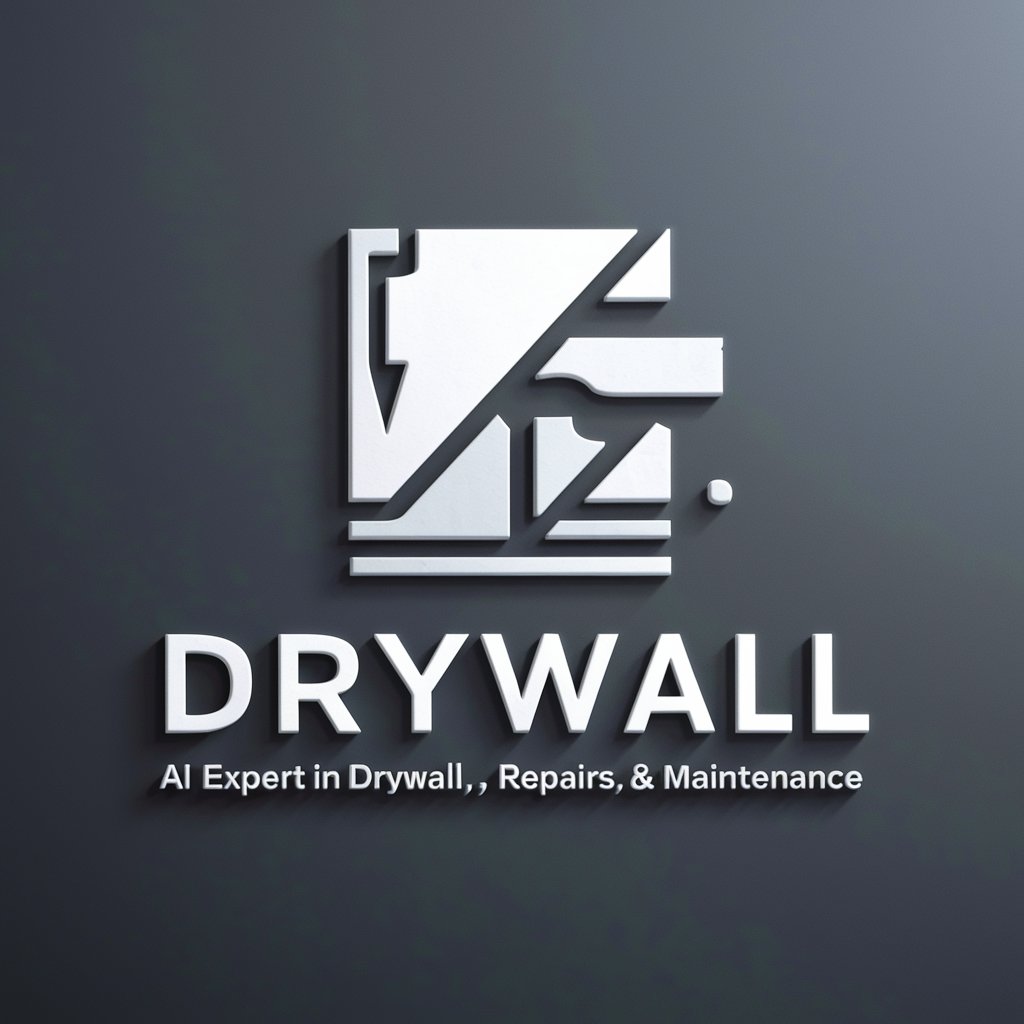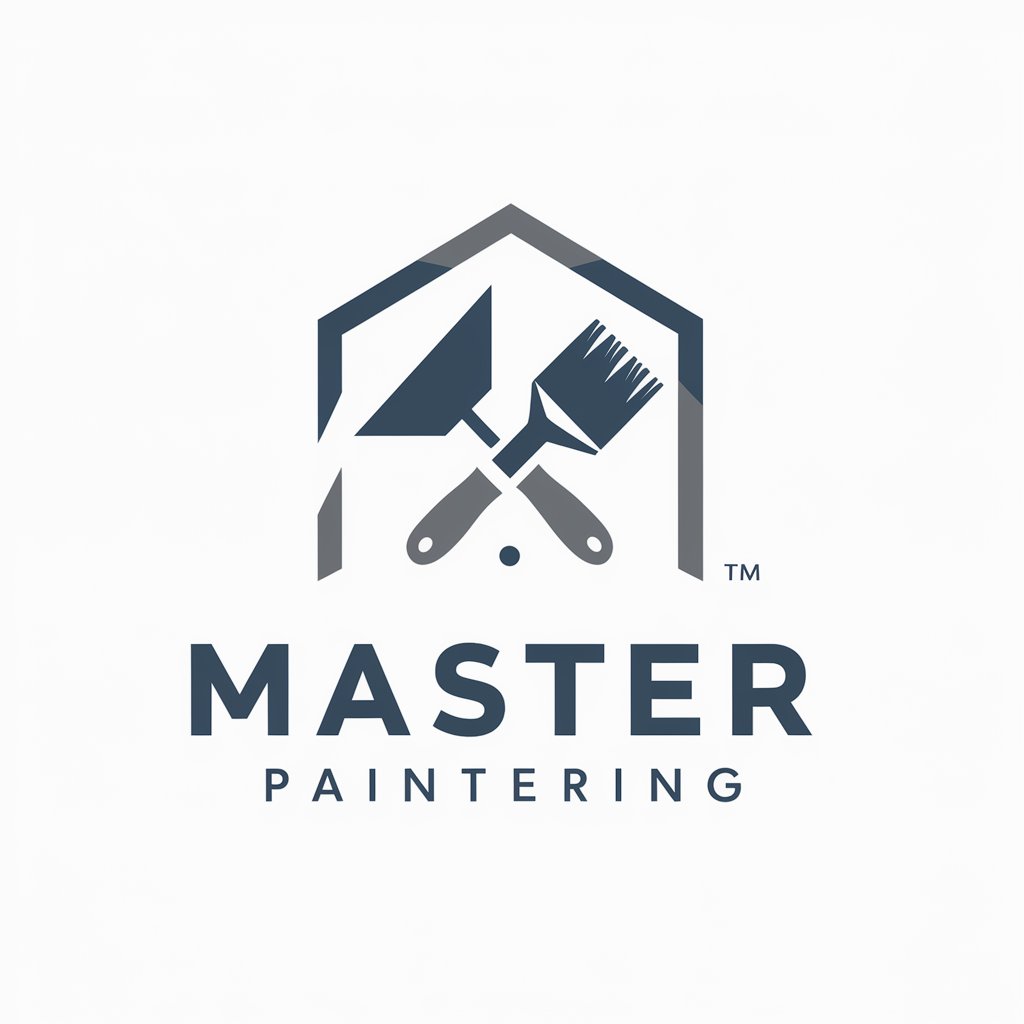
Drywall - Drywall Usage Guide

Welcome! How can I assist with your drywall project today?
Master Your Walls with AI-Powered Drywall Guidance
How do I patch a small hole in drywall?
What are the best tools for installing drywall?
Can you guide me through the steps to prevent cracks in drywall?
What techniques can I use to achieve a smooth finish on my drywall?
Get Embed Code
Overview of Drywall GPT
Drywall GPT, or simply Drywall, is designed as a specialized digital assistant to provide comprehensive advice, tips, and solutions related to drywall installation, repair, and maintenance. This GPT's core purpose is to serve as a knowledgeable companion for both DIY enthusiasts and professional contractors seeking to enhance their drywall work. Whether it's guiding users through the steps of patching a hole, offering advice on selecting the right materials and tools, or demonstrating techniques to achieve a smooth, professional finish, Drywall aims to cover all aspects of drywall projects. Examples of its utility include offering detailed walkthroughs for fixing common wall damages, educating on the prevention of cracks and moisture damage, and providing insights into the latest industry standards and best practices for a flawless installation. Powered by ChatGPT-4o。

Core Functions of Drywall
Installation Guidance
Example
Step-by-step instructions on installing drywall in a new construction or renovation project.
Scenario
A user planning to finish their basement needs comprehensive advice on framing, hanging, taping, and finishing drywall to create a comfortable living space.
Repair Solutions
Example
Detailed methods for patching holes, fixing cracks, and addressing water damage.
Scenario
A homeowner discovers a small hole in their living room wall and seeks a DIY solution to patch it seamlessly, avoiding the cost of professional repair.
Maintenance Tips
Example
Preventative strategies to ensure longevity and aesthetics of drywall surfaces.
Scenario
An individual notices hairline cracks forming in their walls and seeks advice on preventing further damage while maintaining a smooth finish.
Material and Tool Selection
Example
Guidance on choosing the right type of drywall, joint compound, and tools for specific projects.
Scenario
A DIY enthusiast is embarking on a bathroom remodel and needs to know the best type of moisture-resistant drywall and tools for the job.
Who Benefits from Drywall?
DIY Home Improvement Enthusiasts
Individuals looking to undertake home renovation or repair projects themselves. They benefit from detailed guidance and tips that help them achieve professional-quality results without the need for hiring external help.
Professional Contractors
Experts in the field of construction and renovation who seek to stay updated with the latest drywall installation techniques, materials, and tools. Drywall serves as a resource for refining their skills and ensuring high-quality work for clients.
Homeowners
Homeowners interested in maintaining and improving their property's interior. They gain insights into preventative maintenance, minor repairs, and when to seek professional assistance for more complex issues.

How to Use Drywall
1
Start your journey by accessing a trial at yeschat.ai, where you can experience the service with no login required and without subscribing to ChatGPT Plus.
2
Gather your drywall project materials and tools, including drywall sheets, joint compound, drywall tape, a utility knife, a taping knife, and a sanding block.
3
Measure and cut the drywall to fit the area you're working on, ensuring tight seams for a smooth finish. Use a drywall saw for cutting around obstacles like outlets.
4
Secure the drywall to the wall studs or ceiling joists using drywall screws. Ensure screws are slightly recessed but do not tear the paper.
5
Apply joint compound and drywall tape to seams and screw indentations. Sand for a smooth finish, ready for priming and painting. Practice good dust control for a clean working environment.
Try other advanced and practical GPTs
コイバナちゃん
Crafting Love Stories with AI

Desert
Explore the secrets of the desert, powered by AI

Budhismus
Explore Buddhism, Enlighten Your Mind

86
Exploring Numbers with AI

Container
Streamlining Your Space with AI

Buddiżmu
AI-powered insights into Buddhism

"Aklawçy"
Empowering Legal Discovery with AI

92
Unlock the Mysteries of 92 with AI

23
Explore the Mystique of 23 with AI

Who Wants to be a Trillionaire 3.0
Revolutionizing Gaming with AI Power

BrainStorm
Transforming Voice into Structured Clarity

Content Transformer
Transforming Text into Impactful Content

Frequently Asked Questions about Drywall
What is Drywall best used for?
Drywall is ideal for creating smooth, paintable walls and ceilings in interior spaces. It's commonly used in new construction, renovations, and repair projects to quickly cover framing, insulation, and wiring.
How do I repair a small hole in drywall?
To repair a small hole, clean the area around the hole, apply a spackling compound, let it dry, then sand it smooth. For larger holes, use a drywall patch and joint compound.
Can Drywall be used in high humidity areas?
Yes, but it's recommended to use moisture-resistant drywall (often called green board) for areas like bathrooms and basements to prevent mold growth and deterioration.
How do I achieve a professional finish with Drywall?
Achieving a professional finish involves careful measurement, precise cutting, secure fastening, seamless taping, and thorough sanding. Use a light source at an angle to the wall to spot imperfections that need additional sanding.
Is it necessary to prime Drywall before painting?
Yes, priming drywall before painting is essential. It seals the surface, improves paint adhesion, and ensures a uniform appearance of the paint coat.





